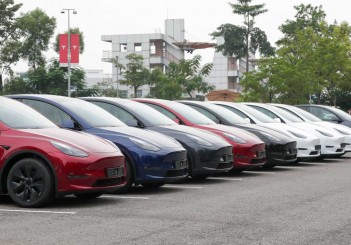The new methodology, to be phased in by autumn 2018, is called Worldwide Harmonized Light Vehicles Test Procedure (WLTP). The WLTP provides more realistic values than the NEDC (New European Driving Cycle), which has been in force since 1992, said Mercedes-Benz in a statement.
As the NEDC was introduced back in 1992 and both traffic and vehicles have changed in the meantime, it is now out of date. On account of its high share of urban driving and low acceleration, it insufficiently reflects reality.

Since Sept 1 2017, all vehicle models to be newly certified for emissions are being tested by Mercedes-Benz according to the WLTP. At the same time, the NEDC consumption is still determined for these vehicles and will for the time being continue to be given as the legally required figure in brochures and all other publications. It is estimated that from September 2018, these figures will then be replaced in Germany by the new WLTP values.
Development of the WLTP began as an initiative of the UN Economic Commission for Europe (UNECE) in November 2007. The goal was to define a globally valid test cycle based on realistic driving data. This is intended to improve the information on consumption as well as the comparability of vehicles. The plan was also to provide incentives to develop efficient technologies in order to reduce the fuel consumption under real driving conditions.
READ MORE: WLTP in detail

So far, the goal of global harmonisation has not been fully achieved. The WLTP applies in the EU, Britain, Norway, Iceland, Switzerland, Lichtenstein, Turkey and Israel as well as in modified form in Japan and, for diesel vehicles, in South Korea.
Russia, Australia and a number of countries in the Middle East, Asia and South America will retain the NEDC; the United States, Brazil and other countries have other cycles. China uses the WLTP as the test procedure for its latest emissions standard. The NEDC is currently used there to determine consumption, although an independent measurement procedure is planned for the future.

The main innovations:
> Compared with the NEDC, the WLTP driving cycle lasts 10 minutes longer (30 minutes instead of 20).
> Standing time now accounts for only 13 percent (NEDC: 23.7 percent).
> The total cycle length is around 23km (NEDC: 11km).
> The WLTP contains higher speeds up to 131kph (NEDC: 120kph).
> The average speed rises to 46kph (NEDC: 34kph).
> The WLTP driving profile is significantly more dynamic, i.e. the changes of speed are greater than in the NEDC. The NEDC has a high proportion of constant-speed driving (40 percent) and a relatively low proportion of acceleration (21 percent). It consists of an urban and an extra-urban part. In contrast, the new WLTP has four different phases: up to 60, up to 80, up to 100 and above 130kph. These simulate urban, extra-urban and highway driving.
> The test parameters are significantly narrower. Hence, for example, the temperature is set at 23°C for the test, while the NEDC allowed between 20 and 30°C. Added to this for the European WLTP is a test at the average European temperature of 14°C.
> The introduction of WLTP means a major change for plug-in hybrid vehicles. These are vehicles, which can be electrically charged from an external source. These vehicles complete the test several times. They start with a full battery. The cycle is repeated until the battery is empty. Finally, there is also a measurement with an empty battery, in which the drive power comes exclusively from the combustion engine and regenerative braking. These two measurements are used to calculate the published CO2 value, for which purpose the two results are set in relation to each other depending on the electric range.
> In addition, unlike before, it is not just the basic variant of a vehicle model that is tested, but optional equipment is also taken into consideration. Thus, when comparing two vehicles, customers can refer to the individual WLTP values in order to see, for example, by how much a sliding sunroof increases the consumption.










